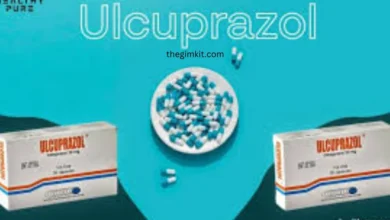Non-Surgical Treatments for Spine Pain

The spine provides your body with structural support, allowing you to bend, stay upright, and move your head, shoulders, and torso in different directions. Spine pain can be debilitating as it interferes with nearly all movements involving the torso. Before trying surgery to resolve spine pain, your spine doctor may recommend non-surgical treatments to eliminate the recovery time needed to heal from spinal surgery. Here are non-surgical treatments to try for spine pain.
Medication
Spine pain may sometimes result from an injury or chronic conditions like arthritis and osteoporosis which cause inflammation in the spine. Doctors prescribe non-steroidal anti-inflammatory medicines like aspirin and naproxen to relieve inflammatory spine pain. If your spine pain results from nerve issues, your doctor may prescribe gabapentin or pregabalin to ease nerve pain. Muscle relaxers are another medication doctors use to treat back pain. These medications are useful for easing muscle spasms and stiffness which may cause spinal pain. In severe cases, doctors may use opioids like oxycodone to treat back pain. Because opioids are addictive, doctors only use them as a short-term solution for spine pain.
Spinal Injections
If medication does not work, your spine doctor may administer a spinal injection to ease your pain. Before administering a spinal injection, your doctor conducts imaging, and other diagnostic tests to determine the source of the pain. Identifying the source of the pain allows for a targeted approach to treatment. Depending on the source of your pain, your doctor may administer the following injections.
Epidural Steroid Injections
If your spine pain stems from nerve inflammation, your doctor administers epidural steroid injections near the inflamed nerves under the guidance of an X-ray. Doctors administer this injection under local anesthesia, minimizing your discomfort.
Trigger Point Injections
These types of injections target muscle points in your back with areas that are sensitive to pressure. Trigger points are easy to identify as they feel like knots or nodules in your back muscles. Trigger point injections involve administering a combination of local anesthetic and anti-inflammatory medication into the problem area. Because trigger points are easy to identify, doctors perform this treatment without X-ray guidance.
Joint Injections
Doctors administer injections into and around the facet and sacroiliac joints when issues affecting these areas cause spine pain. Facet joint injections are effective in treating spine pain in the lower and middle back, and neck caused injury or degenerative conditions. Sacroiliac joint injections relieve lower back pain that travels into the buttocks and legs.
Caudal Steroid Injections
Caudal steroid injections work well for treating lower back pain caused by inflammatory conditions like sciatica and herniated discs. During this treatment, doctors administer a nerve block into the coccyx, instantly relieving pain.
See Your Spine Doctor for Non-Surgical Back Pain Treatment
Non-surgical treatment for spine pain is less risky than surgical treatment and eliminates the long recovery time from back surgery. The best non-surgical treatment for spine pain depends on the cause of your pain. Doctors may recommend over-the-counter solutions like aspirin for less severe pain. Doctors may administer spinal injections where medication fails to relieve spine pain. If you are experiencing back pain, visit your spine doctor for a comprehensive diagnosis and recommendations for a suitable non-invasive treatment.




